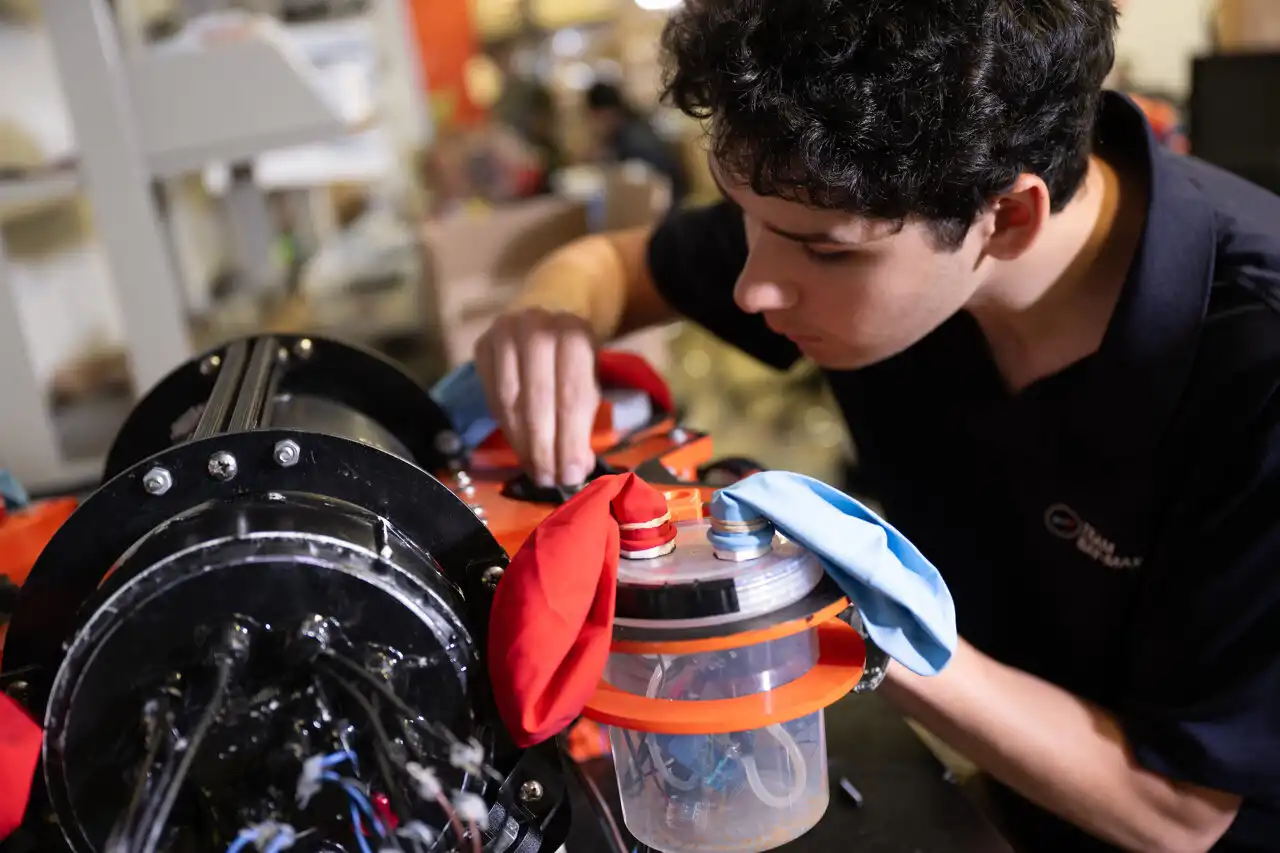Underwater robot pioneers energy-efficient buoyancy control
Rice University students create innovative underwater robot using fuel cells for buoyancy control, winning awards and pioneering new technology.
A groundbreaking remotely operated underwater robot developed by a team of Rice University engineering students is leading the way in innovative buoyancy control technology using water-splitting fuel cells. This cutting-edge device, created at the Oshman Engineering Design Kitchen during a year-long senior design capstone class, offers a more energy-efficient method of maintaining neutral buoyancy, a crucial aspect of underwater operations.
The robot, designed by Team Bay-Max consisting of Andrew Bare, Spencer Darwall, Noah Elzner, Rafe Neathery, Ethan Peck, and Dan Zislis, is a proof-of-concept for the potential of fuel cell-based buoyancy control devices (BCDs) to revolutionize operating costs for remotely operated or autonomous underwater vehicles (AUVs). This technology has a wide range of applications, from environmental monitoring and oceanographic research to military and industrial tasks, providing a quieter and more energy-efficient alternative to traditional thruster-driven AUVs.
The project was inspired by academic research conducted by Rice and the University of Houston, showing that fuel cell-enabled depth control could reduce AUVs' energy consumption by up to 85% compared to conventional thruster designs. Professor Fathi Ghorbel, the team's sponsor and a co-author on the study, highlighted the innovative use of electrolysis to transform water into hydrogen and oxygen gases for buoyancy control, mimicking the swim bladders of fish.
The BCDs incorporate reversible hydrogen fuel cells and balloons, allowing the robot to smoothly adjust its depth with minimal energy use. By applying voltage to the fuel cells, the device can increase buoyancy by ionizing distilled water into hydrogen and oxygen gases. Reverse electrolysis generates energy that the robot can harness, while sensors collect vital system information and orientation data underwater.
The team's project won second place in the Willy Revolution Award for Outstanding Innovation at the annual Huff OEDK Engineering Design Showcase, showcasing their dedication and hard work over the course of the project. The team emphasized the importance of teamwork and clear project scope in achieving their goals, highlighting the challenges and rewards of working on such an ambitious and groundbreaking project.
Overall, the development of this fuel cell-based buoyancy control device represents a significant advancement in underwater robotics technology, with potential applications across various industries and fields. The team's innovative approach and collaborative efforts have paved the way for future advancements in AUV technology and underwater operations.












Comments on Underwater robot pioneers energy-efficient buoyancy control